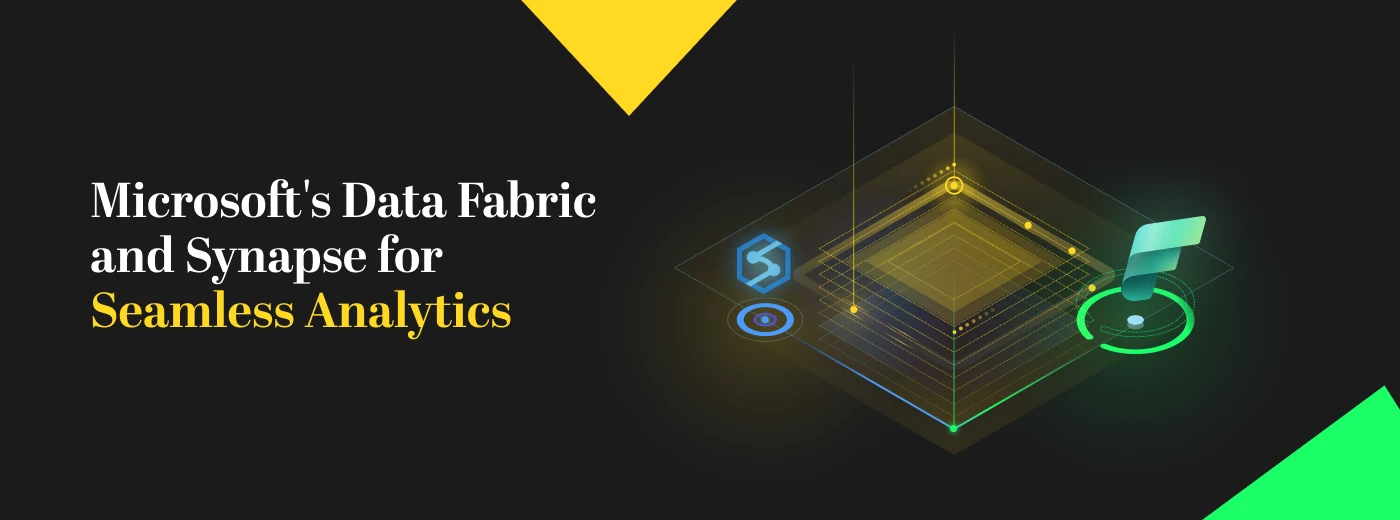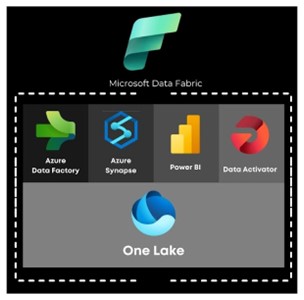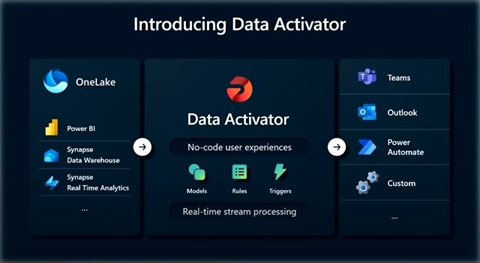
Sign up to receive latest insights & updates in technology, AI & data analytics, data science, & innovations from Polestar Analytics.
Editor’s note: This blog provides a comprehensive overview of Microsoft Fabric and its potential impact on organizations transitioning from Azure Synapse Analytics to Data Fabric. It breaks down elements so that each element is easily digestible.
In our previous blog on Microsoft Fabric: The data-verse for the AI era, we took a dive into Fabric, its advantages, and how OneLake serves as the backbone.
The inclusion of specific use cases further illustrates how Fabric can be leveraged across various industries. The comparisons and observations made throughout offer a balanced perspective on the benefits and challenges of transitioning to Fabric.

Microsoft Fabric is an ultimate insights platform that enhances various analytics and data services from data movement to data science, real-time analytics, and business intelligence. It brings together Synapse Data Engineering, Data Factory, Synapse Data Science, Synapse Data Warehouse, Synapse Real-time Analytics, and Power BI into a unified environment.
The foundation of Fabric is OneLake, which serves as a unified data lake built on Azure Data Lake Storage Gen2. It eliminates the need for users to understand complex infrastructure concepts and enforces compliance with policies and security settings.
The introduction of mirroring as a capability implies a method for replicating data from various sources, such as Cosmos DB, Azure SQL DB, Mongo DB, and Snowflake. Mirroring can be essential for maintaining data consistency and ensuring that the analytics platform has access to the most up-to-date information.
In the pursuit of making the platform universal, Microsoft has made sure to make integration of data easy not only on Microsoft's cloud but "any cloud" providing multi-cloud support. This flexibility can be crucial for organizations with a multi-cloud strategy or those considering cloud migration.
Data Fabric serves as an overarching framework, akin to an operating system, facilitating the integration of multiple analytics applications and engines on the Azure platform. It doesn't supplant tools like Synapse or Power BI; rather, it enhances their functionality within the Fabric ecosystem.
Notably, a new SQL engine is poised to replace dedicated SQL pools in Synapse, amalgamating the strengths of both serverless and dedicated engines for heightened flexibility and power. This engine efficiently reads and processes parquet files, ensuring seamless compatibility across various data formats. With Fabric, users gain access to a comprehensive suite of data warehousing capabilities, harnessing the collective advantages of different engines and tools for a more robust analytics experience.
Here is a YouTube video for a better understanding of this topic.
An overview of features-
As we have learned, Microsoft Fabric serves as a comprehensive solution that amplifies the capabilities of Azure Synapse. It achieves this by seamlessly integrating it into a broader ecosystem of systems, utilizing an open file format for simplified governance. This integration also facilitates the creation of new models and data pipelines.". If you want to gain a more technical understanding of this blog by endjin takes a deep dive.
Now, we can examine each component within Fabric to gain a deeper understanding of how each one plays a crucial role in creating a whole that is greater than the sum of its parts.
It is an enterprise analytics service for data warehouses and big data systems. It integrates SQL, Spark, Data Explorer, Pipelines, and other Azure services.
SQL Capabilities
- Distributed query system for T-SQL.
- Supports data warehousing, data virtualization, streaming, and machine learning.
- Offers serverless and dedicated resource models.
Apache Spark Integration
- Seamlessly integrates Apache Spark for data prep, engineering, ETL, and ML.
- Supports SparkML algorithms and AzureML integration.
- Simplified resource management and autoscaling.
Data Lake Integration
- Enables seamless use of SQL and Spark together.
- Tables defined on data lake files accessible by both SQL and Spark.
- Direct exploration and analysis of various file formats.
Data Integration and ETL
- Includes Data Integration engine from Azure Data Factory.
- Supports ETL pipelines with code-free data flow activities.
- Orchestration of various tasks like notebooks, Spark jobs, stored procedures, and more.
Data Explorer
- Provides interactive query experience for log and telemetry data.
- Optimized for log analytics with powerful indexing technology.
- Supports pattern recognition, anomaly detection, and more.
Unified Experience with Synapse Studio
- Centralized platform for building, maintaining, and securing solutions.
- Perform tasks like ingestion, exploration, preparation, orchestration, and visualization.
- Monitor resources, usage, and users across SQL, Spark, and Data Explorer.
Role-Based Access Control (RBAC)
- Simplifies access to analytics resources.
- Supports writing SQL, Spark, or KQL code and integration with CI/CD processes.

Data Activator, a part of Microsoft Fabric, enables dynamic monitoring of operational data in real-time or batch, triggering automated actions based on predefined conditions, and enhancing proactive decision-making and issue resolution. It seamlessly integrates with various applications like Teams, email, and Power Automate workflows, ensuring efficient data management and governance within Microsoft Fabric's comprehensive analytics ecosystem.
If you want to know more about the topic, you can watch the video by Microsoft on YouTube.
OneLake is a unified data lake within Microsoft Fabric, akin to OneDrive for data. It serves as a central repository for an organization's analytics data, eliminating the need for multiple separate data lakes. Each Microsoft Fabric tenant is automatically provisioned with OneLake.
It supports distributed ownership, enabling collaboration across different business units within a tenant. OneLake is built on Azure Data Lake Storage Gen2 and is compatible with various file types. It stores data in Delta Parquet format, allowing seamless access through APIs and SDKs.
Shortcuts facilitate data sharing without duplication, and data can be used by multiple analytical engines, including T-SQL, Spark, and Analysis Services, eliminating the need for data copying. This integration offers flexibility for different teams, enabling them to use the most suitable analytical engine for their specific tasks. OneLake streamlines data access, management, and collaboration, enhancing organizational efficiency in data analytics.
Adopts a capacity-based commercial model, potentially impacting TCO. (Total cost of Ownership). Migration may be more straightforward for organizations with predominantly Spark-based workloads.
Recommendations
Evaluate the impact on the Total Cost Of Ownership, consider the pros and cons of SaaS, and assess vendor lock-in.
Consider time to value, minimization of technical debt, and potential impact on Azure costs.
Assess new features and their alignment with long-term data & analytics strategy.
Industry-based Use Cases
Here are some short format use cases for Microsoft Fabric across different industries:
Retail
- Enhancing customer insights and personalization.
- Ingesting data from POS (Point of Sale) systems, e-commerce platforms, and loyalty programs.
- Segmenting customers and generating recommendations.
Manufacturing
- Optimizing production processes and reducing costs.
- Ingesting data from sensors, machines, and ERP systems.
- Analyzing production performance and identifying inefficiencies.
Finance and Insurance
- Detecting fraud and preventing financial crimes.
- Ingesting data from transactions, accounts, and customers.
- Identifying suspicious patterns and anomalies.
At Polestar, we help enterprises in harnessing the power of data, specializing in Azure implementation. Our expert team leverages Azure's robust ecosystem to design and deploy data architectures, ensuring optimal integration, governance, and security.
With a tailored approach, we empower businesses to unlock actionable insights and drive informed decision-making.
Here is a brief about our services in the Data fabric domain.
About Author

Information Alchemist
Marketeer at heart, story creator by passion, data enthusaist by profession.